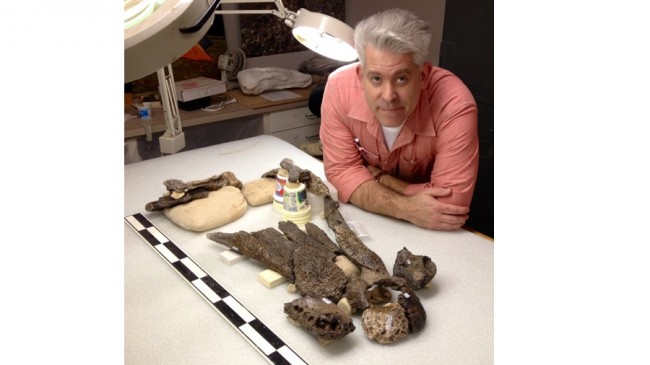
Stars have named other sorts of an obsolete crocodile in context of fossilized stays found in Texas. End up being more acquainted with the Deltasuchus motherali, a Cretaceous-period predator.
Another old crocodilian species has starting late been depicted by analysts in a report appropriated in the Journal of Vertebrate Paleontology. Dr. Thomas Adams of the Witte Museum, Dr. Stephanie Drumheller-Horton of the University of Tennessee, Knoxville, and Dr. Christopher Noto of the University of Wisconsin-Parkside took part to see the new species.
The Deltasuchus motherali is the basic depicted among the run of the mill two or three animal sorts in the zone. Grown-ups of the species supposedly had the capacity to grow up to 20 feet (6 meters) in length and left eat imperfections on their prey, which could continue running from littler animals, for example, turtles to more noteworthy animals, for example, dinosaurs. Along these lines, specialists accept that the Deltasuchus motherali was a predator that fundamentally ate whatever they required. Truly, lead producer of the examination, Dr. Adams even descricbes the crocodile as “top predators in its natural gathering.”
They named the species Deltasuchus motherali after Austin Motheral, the site volunteer, who was only 15-years of age when he found the fossils with a little tractor. The fossils are before long a touch of the Perot Museum of Nature and Science in Dallas.
In 2003, novice fossil searchers Phil Kirchoff, Bill Walker, and Art Sahlstein found the fossilized stays of the Deltasuchus motherali in Arlington, Texas, pleasing grouping of the Dallas-Fort Worth Metroplex.
Called the Arlington Archosaur Site, scientistss are rapidly revealing the site for other fossil finds, as the range is additionally being quickly confined into a prime adjacent territory. The ejection in the space is financed by the National Geographic Society with wants of inducing getting some answers concerning the North American old characteristic system.
“We basically don’t have that different North American fossils from the point of convergence of the Cretaceous, the last time of the season of dinosaurs, and the eastern piece of the region is especially insufficiently understood,” said Drumheller-Horton.
It is a quick outcome of this that the site is in a general sense more essential, as it is viewed as an interesting fossil range that stick the characteristic gathering from 95 to 100 million years sooner.
We may not see it now, yet rather 100 million years back, Texas was really secured by shallow seawater. Further, the Dallas-Fort Worth region was somewhat of a projection with swamps and channels that were the obvious general surroundings of outdated fish, plants, dinosaurs, creatures of land and water, weak creatures, and crocodiles.
